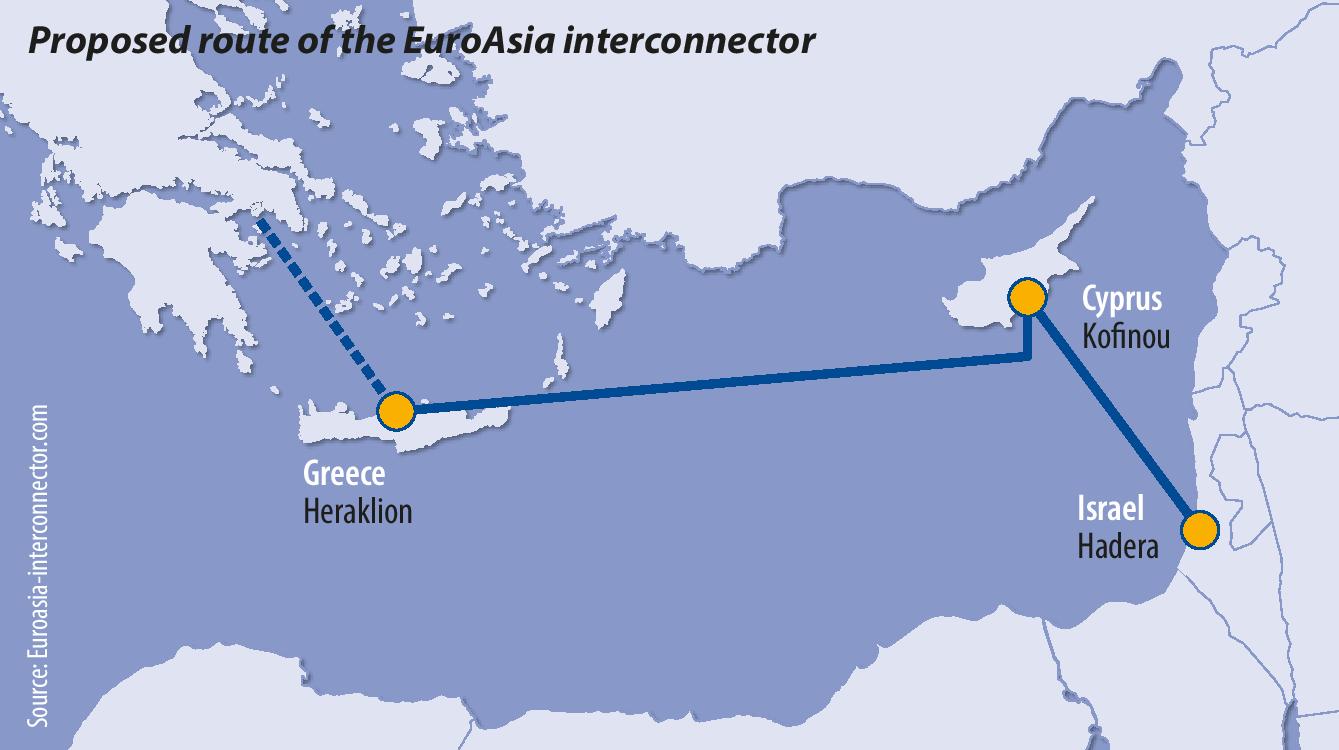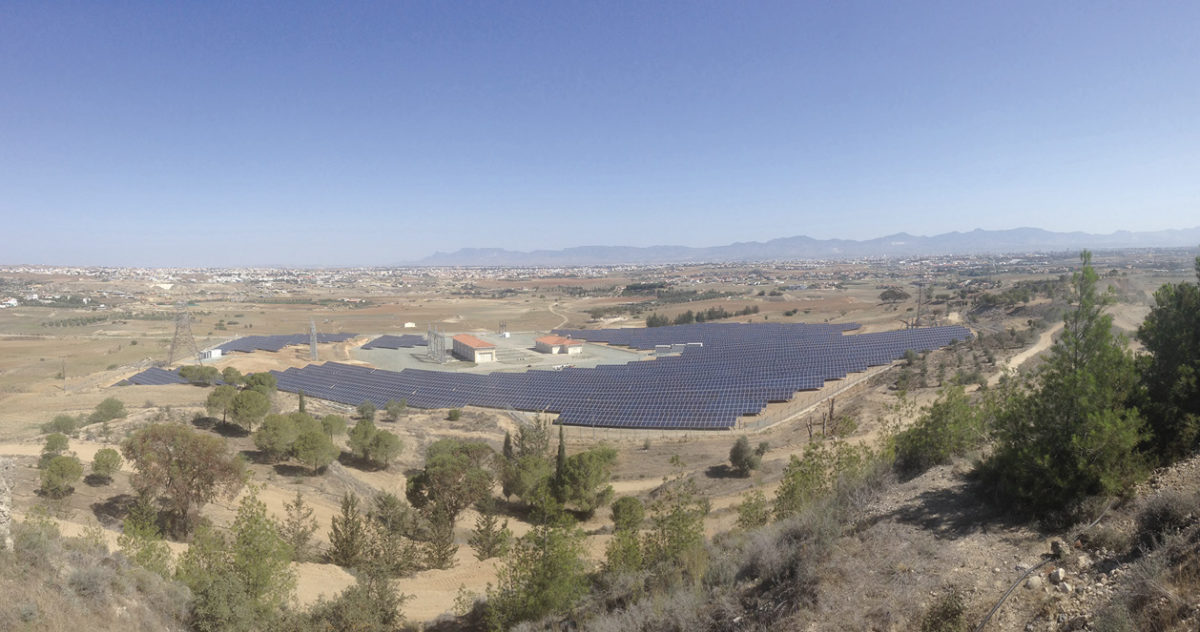From pv magazine 06/2022
Subsidy-free is not always what it seems. In recent years, Cyprus has seen a wave of new PV parks that are often branded as “subsidy-free,” but in many cases, they do receive temporary subsidies. Specifically, when a project is supported via a power purchase agreement (PPA) signed between a power generator and an offtaker, this is typically subsidy-free. However, the government has also allowed renewable energy projects to receive a variable subsidy, the so-called avoidance cost.
The avoidance cost equals the amount of money national utility the Electricity Authority of Cyprus (EAC) saves by not paying fossil fuel power plants to generate when electricity is supplied by a renewable energy project. Cyprus does not have a competitive electricity market at present, but when the country implements a competitive market design, these projects will no longer be remunerated via the “avoidance cost” and will instead need to participate in the market.
Cyprus has fostered PV via various remuneration schemes. Ground mounted projects typically comprise solar farms supported either by government set feed-in tariffs (FITs) or a tariff set via competitive tender. Rooftop PV in Cyprus is generally installed under either net metering or net billing systems. These schemes are quite similar, although systems installed under net billing, unless energy storage is also included, can only cover a maximum 80% of an investor’s annual energy needs. Net metering systems are also small and usually up to 10 kW per rooftop, but net billing arrays can have capacities of 10 kW to 10 MW. Because of Cyprus’ compact size, a net billing rooftop project can often be larger than a ground-mounted utility solar farm.
Installations
Cyprus Energy Regulatory Authority (CERA) Chairman Andreas Poullikkas said that the country has installed 335 MW of PV capacity. Of this, Poullikkas added, about 100 MW are net metering and net billing systems. Cyprus has installed about 77 MW of PV capacity supported by government set FITs. The country has run only one renewable power auction, awarding 50 MW of capacity in 2013. Of this, only 35 MW has been installed.
The remaining installed solar has been executed via the “subsidy-free” provisions. Specifically, 76 projects totalling 101.5 MW have been supported, for the time being, by the “avoidance cost” mechanism. In 2020 and 2021, 74 of these projects were installed, while another two were connected to the grid in early 2022.
Subsidy-free projects supported by PPAs comprise the most recent wave of solar installations in Cyprus. The government, said Poullikkas, encouraged a number of different renewable energy technologies to be developed under PPAs, however only solar projects were able to get off the ground. The Cyprus Ministry of Energy, Commerce and Industry (MECI) said in a press release in January 2022, that the PPA segment of the market features 132 systems, of which 32 commenced operation in 2021. The remaining 100 systems will be electrified by the end of this year. Overall, the PPA contracts correspond to 250 MW of solar capacity.
This last rush of solar projects, predominantly in the form of “subsidy-free” projects, allowed Cyprus to reach its renewable energy goals for 2020. However, these goals lacked ambition. Thus, Cyprus is currently generating only 16% of its electricity via renewables, while for 2030 the country is aiming “at least [a] 26% share of renewables in gross final electricity consumption.”

Energy storage
Earlier this year MECI announced that the ministry is considering new tenders for systems combining renewable power and energy storage. The tender scheme for such systems is currently under consideration by the European Union (EU) and is pending approval.
Poullikkas said that the regulator hasn’t designed this tender scheme, however, he added that the regulator has established the rules defining how storage units will operate in the electricity market. CERA’s guidelines are technology agnostic.
Regarding behind-the-meter storage, Poullikkas said that over the past three years CERA has licensed solar-plus-storage systems, however they have not yet been installed. These are typically PV arrays around 5 MW in size, coupled to a battery system. Poullikkas believes they will be installed soon as the regulatory framework for such systems is already in place.
There are a small number of pilot energy storage units operating in Cyprus. These include an 84 kWh battery unit, manufactured by German company Autarsys and installed by a local partner in the suburbs of the capital city Nicosia.
In April, MECI published a new $1.6 million subsidy scheme that targets owners of electric vehicles (EVs) and hybrids, encouraging them to install PV and battery systems. The new program allows households that own such vehicles to claim €750 ($796)/kW, capped at €1,500 per vehicle, and a maximum of €2,000 for the installation of battery storage. Combined with a recently rolled out €30 million subsidy scheme for the purchase of EVs, it is possible Cyprus will experience a wave of distributed battery installations in the coming years. However, Andreas Procopiou, a local renewable energy expert who carried out research on the active management of electricity networks with high penetration of PV (the UK and Australia), says that Cyprus still needs more regulations and incentives to see growth in behind-the-meter storage installations.
Net metering and net billing schemes are great, added Procopiou, but those alone are not enough to encourage battery storage. pv magazine has confirmed separately that the regulator has not licensed any storage systems coupled with net metered projects. For batteries to become economically attractive, said Procopiou, Cyprus needs a number of new electricity regulations such as time-based tariffs and demand response, while policies such as tax credits for those installing batteries and solar could also increase the attractiveness of distributed batteries.
Market design
Cyprus’ new electricity market design will play a central role in the evolution of its solar and energy storage markets. The regime is expected to commence before year’s end. The reforms will follow the EU’s so-called target model, aiming to boost competition, sustainability, and energy security through increasing power flows between EU member states.
Given Cyprus does not yet have electricity interconnections with other countries, it was allowed to delay its market reforms and, until recently, the national utility (EAC) enjoyed an absolute monopoly. Increased interconnection is coming, however, in the form of a project aiming to link Cyprus to Greece, Israel and Egypt – a type of regional super-grid. Until the electricity market becomes fully liberalized before the end of the year, the current transitional regime allows independent power suppliers to sell electricity to large consumers. To date there are two such suppliers: Evergy and Bioland Promithia.
Evergy COO Fanos Karantonis explained that it currently has 92 large commercial customers, which it supplies with exlusively PV power. Karantonis is also managing director of the Karantonis group, which either separately or together with Greece’s Mytilineos Group has developed a solar portfolio in Cyprus and sells some electricity to Evergy.
Given this new PPA activity, the question is whether the new market design can fundamentally change Cyprus’ energy mix – which is currently based predominantly on gas and diesel. Karantonis said such a change would depend on a number of factors. These include the implementation of energy storage and the upgrade of the electricity network and its connection with neighbouring countries. Karantonis said Cyprus will need to curtail about 10 GWh of renewable electricity in 2022, corresponding to about 2% of its renewable generation.
Procopiou agrees, adding that some of the fossil fuel generators that the network operator keeps online to guarantee its stability are, according to EU law, operating illegally due to dangerous emissions. Consequently, Cyprus is paying penalty fees.
Lack of vision
Discussion turns inevitably to electricity prices. Cypriot Energy Minister Natasa Pilides told a local conference in March that solar had been prohibitively expensive until 2015, which had stifled an acceleration of its adoption. “If we [the government] had promoted solar more strongly [before 2015], the cost for the consumer would be greater,” added Pilides.
However, all data contradicts Pilides’ argument. Specifically, Cyprus’ PV tender in January 2013 led to an average tender price of €0.0866/kWh. Today, almost a decade later, the EAC avoidance cost which reflects the cost of generating power through conventional power stations, has climbed up to €0.192/kWh.
This so-called “avoidance cost” has recently been increased, reaching unprecedented highs due to the war in Ukraine – particularly given Cyprus’ reliance on natural gas. However, even before 2022, “avoidance costs” were mostly higher than the PV tariffs awarded under tender in 2013. The sun-washed island could become 100% powered by renewables, saving electricity consumers money, but for this to happen cost misconceptions and the vested interests of fossil fuels, must be overcome. 
| Solar installations in Cyprus by support mechanism | |
| Support Scheme | Capacity in MW by April 2022 |
| Net metering and net billing | 100 |
| FIT | 77 |
| Tender (FIT) | 35 |
| Avoidance Cost | 101.5 |
| PPAs | 21.5 |
| Source: pv magazine/Ilias Tsagas | |
This content is protected by copyright and may not be reused. If you want to cooperate with us and would like to reuse some of our content, please contact: editors@pv-magazine.com.



3 comments
By submitting this form you agree to pv magazine using your data for the purposes of publishing your comment.
Your personal data will only be disclosed or otherwise transmitted to third parties for the purposes of spam filtering or if this is necessary for technical maintenance of the website. Any other transfer to third parties will not take place unless this is justified on the basis of applicable data protection regulations or if pv magazine is legally obliged to do so.
You may revoke this consent at any time with effect for the future, in which case your personal data will be deleted immediately. Otherwise, your data will be deleted if pv magazine has processed your request or the purpose of data storage is fulfilled.
Further information on data privacy can be found in our Data Protection Policy.